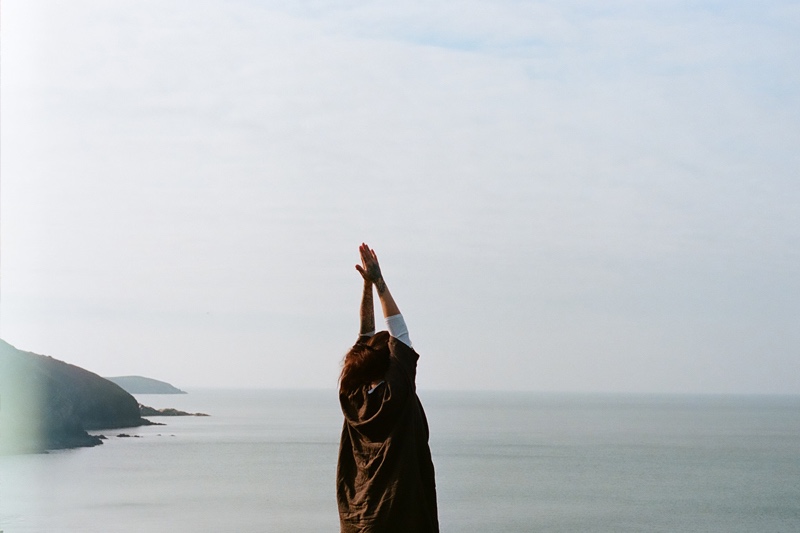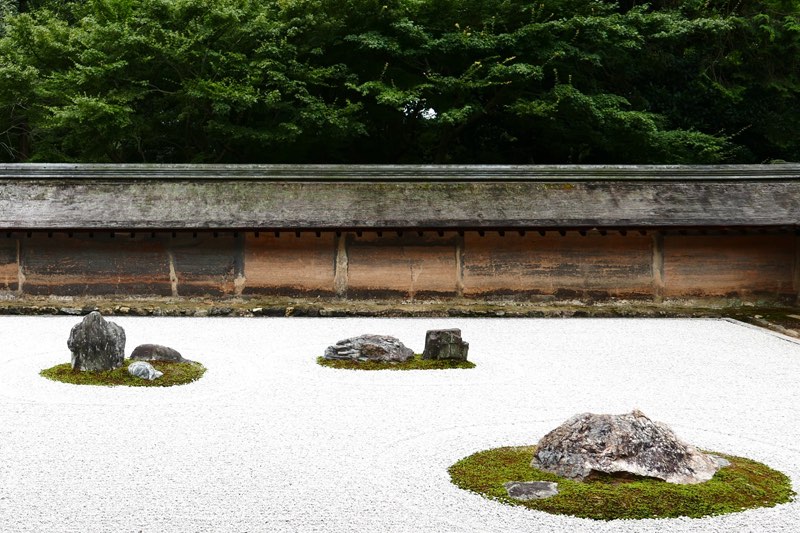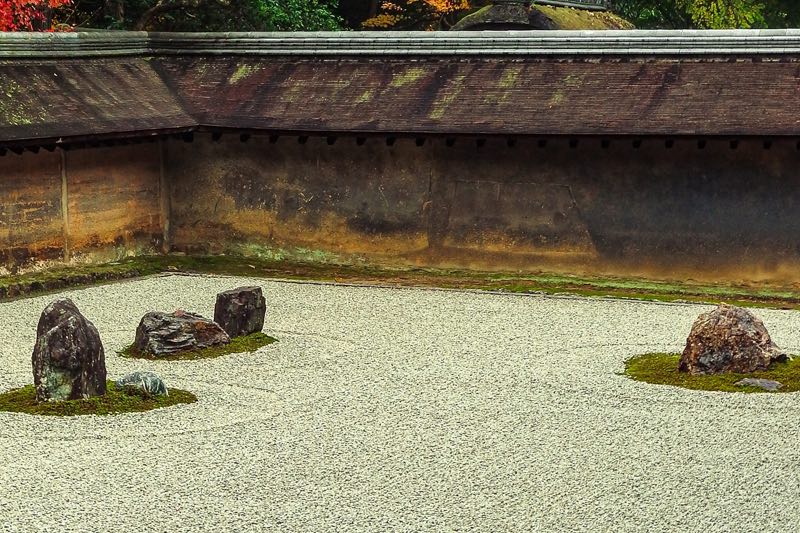Paradigm Shift
Dramatic changes in the way of looking at things and values that were considered normal in that era. Paradigm = examples, norms, dominant views, and ideas. Shift = To shift the position, state, system, etc.

In the field of science, Isaac Newton’s “Law of Universal Gravitation” and Albert Einstein’s “Theory of Relativity” can be cited as examples. Familiar to us, the spread of the Internet (WWW) and smartphones have dramatically changed our lives.
Currently, one could say that a paradigm shift is also taking place between 2020 and 2021. With the changes in the global environment, the lifestyle changes in the Coronavirus, and the events happening in the world, it seems as if not everything is shifting in the right direction.
At that time, I suddenly remembered Ryoanji in Kyoto, a temple I used to visit often until a few years ago.
Ryoanji

Ryoanji, a temple of the Myoshinji school of the Rinzai sect in Kyoto, was founded in 1450 by Hosokawa Katsumoto in the Muromachi period (1336-1573) and became world-famous when Queen Elizabeth II of England visited its stone garden in May 1975. It is now listed as UNESCO World Heritage Site.
Ryoanji’s Stone Garden
Fifteen stones, large and small, are placed on the white sand surrounded by earthen walls, giving it an indescribably abstract appearance. When I saw the stone garden for the first time, I felt nostalgic for the landscape without water, trees, or greenery (Kare-Sansui), and at the same time, I felt proud that this stone garden existed in Japan.
The number 15 is considered to be a number such as “perfection” or “completion” in Eastern thought. However, in the stone garden of Ryoanji, one of the 15 stones is hidden by a stone so that only 14 can be seen from any angle. This means “imperfection” or “incompleteness” and seems to express the world view of Zen.
The artist who created the stone garden at Ryoanji is still a mystery, and the intentions and interpretation of the garden are left to the imagination of each viewer. Also, one of the stones in the garden is inscribed with the words “Kotaro, Kojiro. It seems to be the name of the artist, but there is no proof that this is the artist either. The mystery surrounding Ryoanji reminds me of the story of “Ikkyu-san”.

The beauty of a stone garden and the interpretation left to the viewer
Many years ago, when I was reading a lot of books about Ryoanji because I liked it so much, I found the word “decadence” written in one of the books. It is a word that comes to my mind when I think of Ryoanji.
“Decadence” is a French word meaning nihilism, decay, and is also used as an artistic term.
In the world of French literature, there were artists such as Stéphane Mallarmé and Arthur Rimbaud who found beauty in the nihilistic. Nihilism means emptiness, nothingness, and vainness.

With no trees, water, or greenery in the garden, and the arrangement of stones so that only 14 stones are visible when there should be 15, the “stone garden” of Ryoanji could be called nihilistic. As an aspect of the stone garden, I feel that it overlaps with the word “decadence”.
Mallarmé and Rimbaud were active around 1870, and the exact date of the creation of the stone garden is unknown, but it is estimated to be around 1500. In any case, the stone garden at Ryoanji existed more than 200 years before the activities of the French artists.
Tsukubai of Ryoanji may provide a clue to solving the mystery
“Tsukubai” is a basin placed near the entrance of a tea ceremony room for people to squat and wash their hands with water (Tsukubau). Tsukubai at Ryoanji Temple is in the shape of a round coin with a “口” cut out in the center. The center of Tsukubai is hollowed out in the shape of a mouth, surrounded by the characters “五, 隹, 疋, 矢”. When the “口” in the center is added to each of the surrounding characters, the result is “吾, 唯, 足, 知” (Ware, Tada, Taru(wo), Shiru).
“One who knows how to be content is rich even if one is poor, and one who does not know how to be content is poor even if one is rich”.

From the word “Tsukubai”, if 15 stones are “perfect”, then a stone garden where one stone is hidden and only 14 can be seen from any angle. This means that it is okay to remain “incomplete. I think that is where “beauty” resides.
When I went to Ryoanji a few years ago, I remember a woman from overseas looking at the stone garden and saying, “Peaceful!” when she saw the stone garden. I imagine that she was looking at the stones placed on the white sand, feeling nature just like the mountains and rivers, and feeling satisfied and peaceful because there was nothing to see.
Paradigm Shift and Ryoanji
In the year 2021, I feel that we are living in an era where the way we look at things, common sense, and values are changing dramatically. At times like this, it is important to reconsider our lifestyles based on the teachings of “one already has all one needs” If I have the chance, I will visit the stone garden of Ryoanji again and ask myself the Zen dialogue while gazing at the garden.


